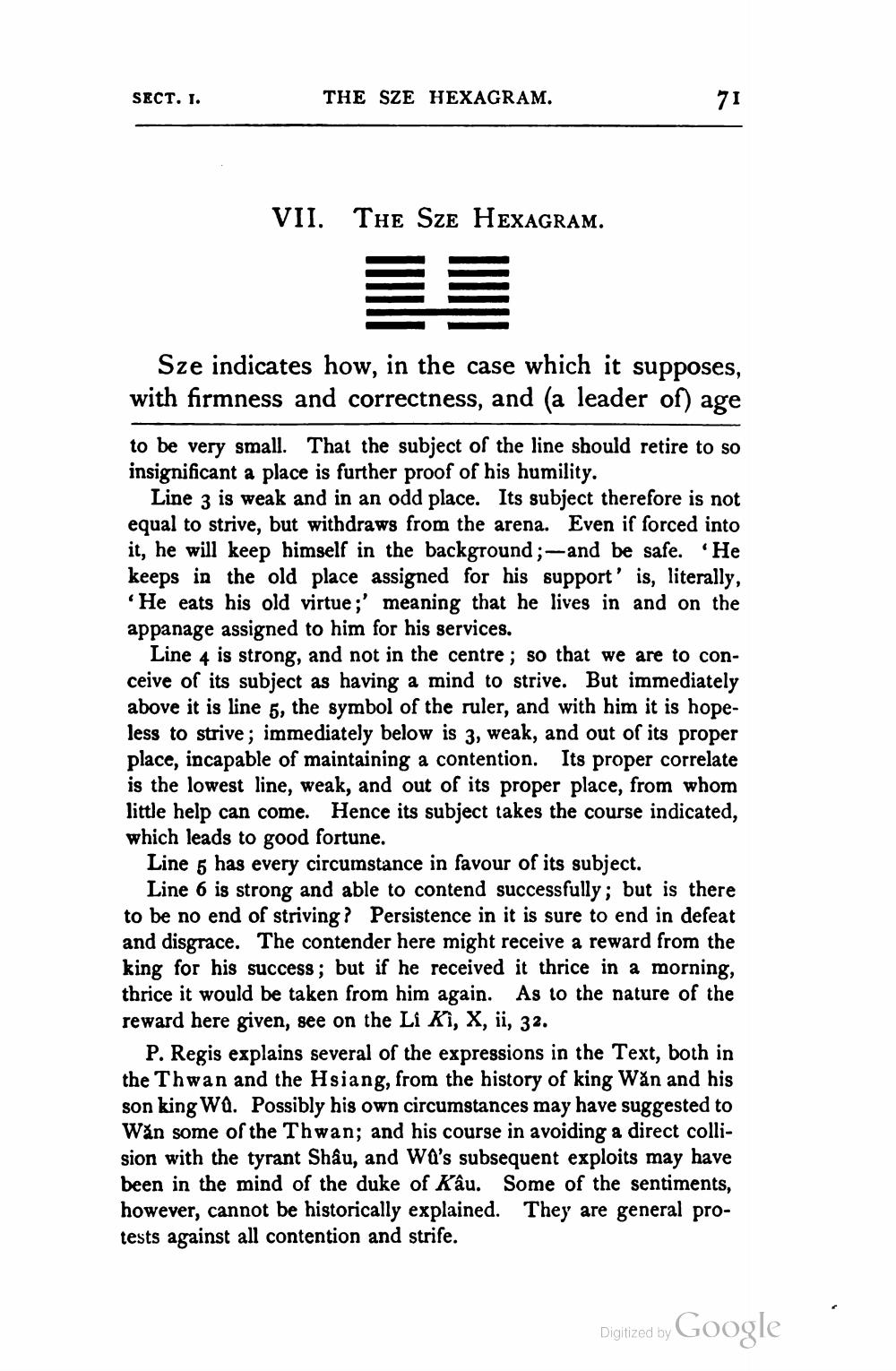________________
SECT. 1.
THE SZE HEXAGRAM.
VII. The Sze HEXAGRAM.
Sze indicates how, in the case which it supposes, with firmness and correctness, and (a leader of) age
to be very small. That the subject of the line should retire to so insignificant a place is further proof of his humility.
Line 3 is weak and in an odd place. Its subject therefore is not equal to strive, but withdraws from the arena. Even if forced into it, he will keep himself in the background;--and be safe. He keeps in the old place assigned for his support' is, literally, "He eats his old virtue;' meaning that he lives in and on the appanage assigned to him for his services.
Line 4 is strong, and not in the centre; so that we are to conceive of its subject as having a mind to strive. But immediately above it is line 5, the symbol of the ruler, and with him it is hopeless to strive; immediately below is 3, weak, and out of its proper place, incapable of maintaining a contention. Its proper correlate is the lowest line, weak, and out of its proper place, from whom little help can come. Hence its subject takes the course indicated, which leads to good fortune.
Line 5 has every circumstance in favour of its subject.
Line 6 is strong and able to contend successfully; but is there to be no end of striving? Persistence in it is sure to end in defeat and disgrace. The contender here might receive a reward from the king for his success; but if he received it thrice in a morning, thrice it would be taken from him again. As to the nature of the reward here given, see on the Li Ki, X, ii, 32.
P. Regis explains several of the expressions in the Text, both in the Thwan and the Hsiang, from the history of king Wån and his son king W0. Possibly his own circumstances may have suggested to Wån some of the Thwan; and his course in avoiding a direct collision with the tyrant Shâu, and Wa's subsequent exploits may have been in the mind of the duke of Kâu. Some of the sentiments, however, cannot be historically explained. They are general protests against all contention and strife.
Digitized by Google




